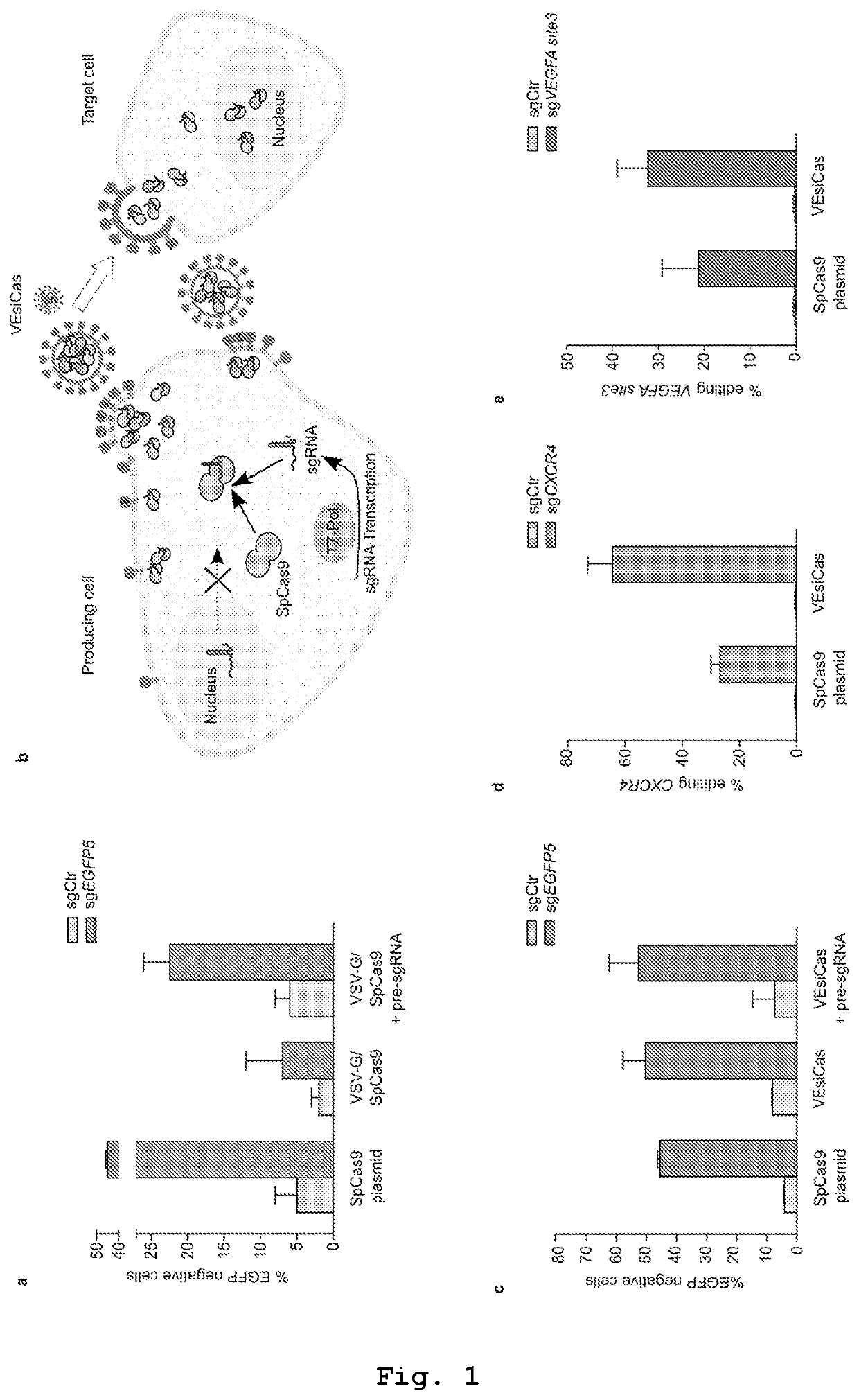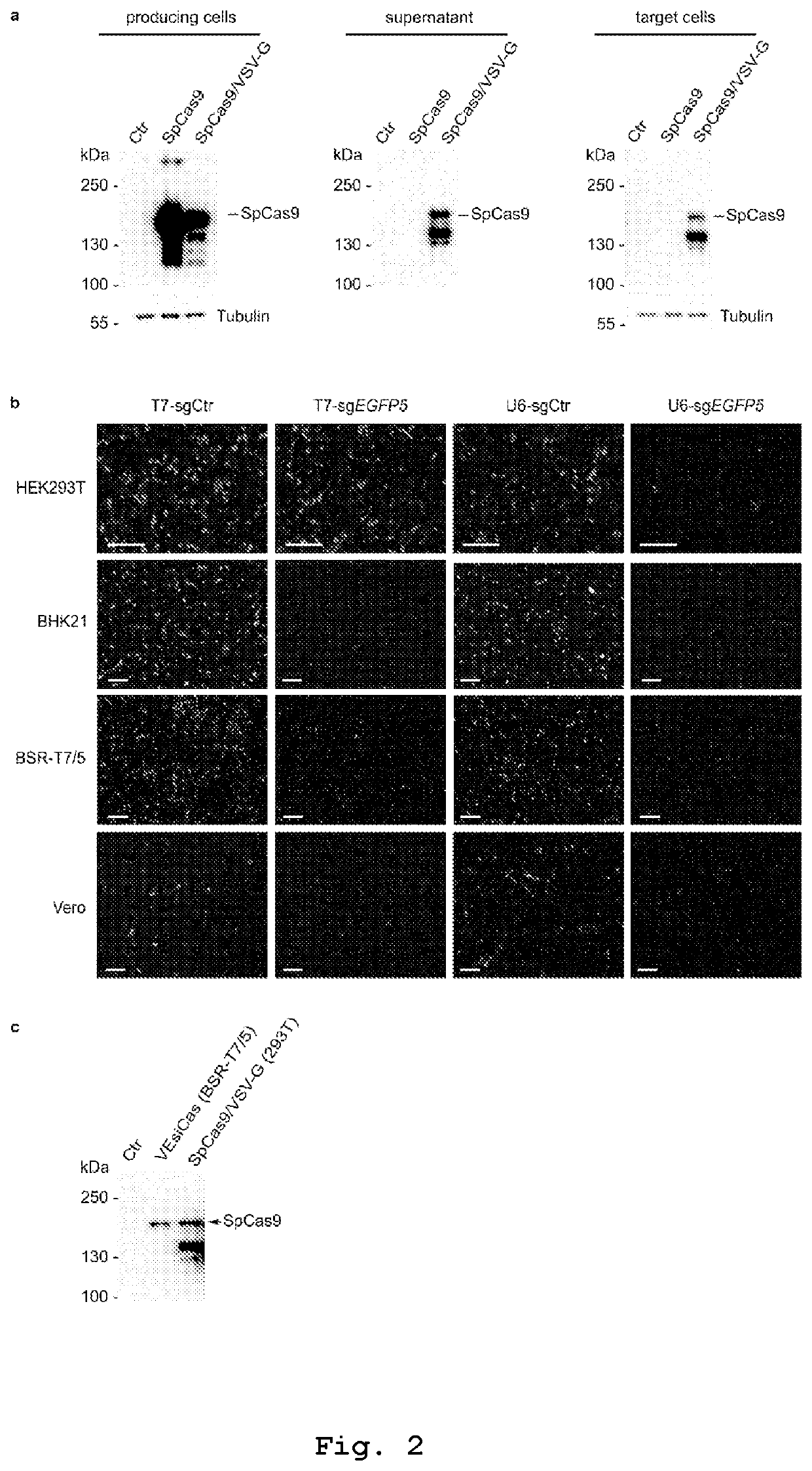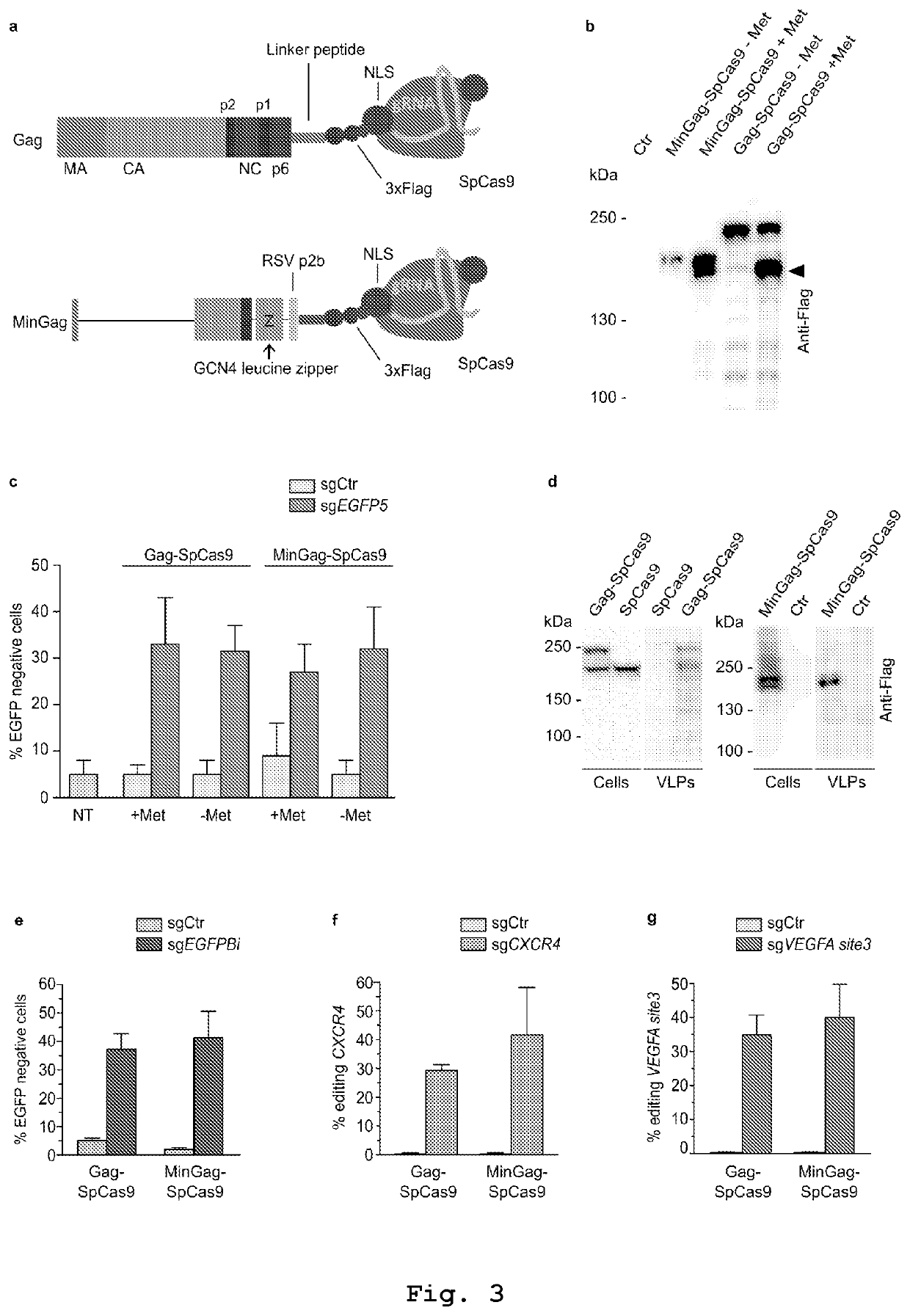Vesicles for traceless delivery of guide RNA molecules and/or guide RNA molecule/RNA-guided nuclease complex(ES) and a production method thereof
a technology of vesicles and rna molecules, applied in the direction of hydrolases, biochemistry apparatus and processes, viruses/bacteriophages, etc., can solve the problems of high cellular toxicity, lack of precise control of the amount, and inability to deliver rnas or rnps in animal models or for therapeutic purposes
- Summary
- Abstract
- Description
- Claims
- Application Information
AI Technical Summary
Benefits of technology
Problems solved by technology
Method used
Image
Examples
embodiment
Preferred Embodiment
[0196]In the following, a discussion about a preferred embodiment of the instant description is provided, wherein the vesicles (named VEsiCas) are able to deliver CRISPR-Cas components employing as membrane-associated protein constituting the vesicle envelope the VSV-G protein. Such data are not limiting with respect to the actual scope of the present invention as claimed in the pending set of claims.
[0197]The present inventors discovered that vesicles incorporating VSV-G protein, in combination with SpCas9, were sufficiently loaded with SpCas9 protein. However, vesicles produced under standard experimental conditions using nuclear U6-based transcription for the sgRNA synthesis showed poor genome editing activity, suggesting non-sufficient amounts of incorporated sgRNA. This limitation was circumvented by favoring SpCas9 protein assembly with the sgRNA in producing cells through cytoplasmic sgRNA synthesis driven by the T7 RNA polymerase. To this end the present ...
PUM
| Property | Measurement | Unit |
|---|---|---|
| Fraction | aaaaa | aaaaa |
| Time | aaaaa | aaaaa |
| Mass | aaaaa | aaaaa |
Abstract
Description
Claims
Application Information
 Login to View More
Login to View More - R&D
- Intellectual Property
- Life Sciences
- Materials
- Tech Scout
- Unparalleled Data Quality
- Higher Quality Content
- 60% Fewer Hallucinations
Browse by: Latest US Patents, China's latest patents, Technical Efficacy Thesaurus, Application Domain, Technology Topic, Popular Technical Reports.
© 2025 PatSnap. All rights reserved.Legal|Privacy policy|Modern Slavery Act Transparency Statement|Sitemap|About US| Contact US: help@patsnap.com



